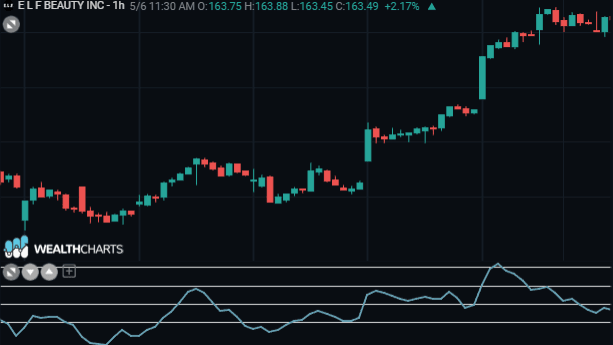Categories
About UsHow to get startedAccount AccessBrokers and TradingScannersResearch ToolsCommunityStocksOptionsFuturesAlertsChaikin Oscillator - Indicator Formula
It's a price/volume indicator developed by Marc Chaikin and constructed as the difference between two moving averages of Accumulation/Distribution.
In other words, the Chaikin Oscillator is defined as:
CO( t ) = E3AD( t ) - E10AD( t )
where:
CO( t ) = Chaiking Oscillator of the current day;
E3AD( t ) = value of the exponential moving average at 3 days of the current AD;
E10AD( t ) = value of the exponential moving average at 10 days of the current AD;
The principles on which it's based are now quite clear:
If the stock closes beyond the average level of its range (defined as the semi-sum of the maximum and the minimum), it can be assumed that there has been accumulation; otherwise, for that day there has been distribution;
a genuine rise must be accompanied by discreet volumes; while the falls are physiologically accompanied by low volumes. The alarm bells sound when the rise takes place with low volumes, while with the fall there is an increase in trade. All these situations are monitored by the Chaikin Oscillator;
According to the developer, the Chaikin Oscillator enables you to observe the flow of cash in and out of the market (or from the stock). By comparing this flow with the share of prices, it is possible to identify medium/long-term maximums and minimums.
Two situations in particular need to be taken into account:
1) When the oscillator fails to reach a new high (or a new low), a trend reversal is likely;
2) if the oscillator reverses direction together with prices, there is a market entry signal.
One last warning: it is appropriate to use the Chaikin Oscillator together with other instruments and techniques; the same developer uses a trading model based on his oscillator and the Bollinger Bands.
